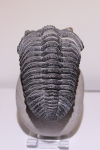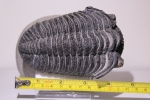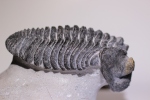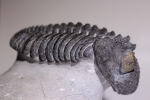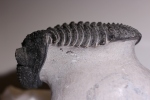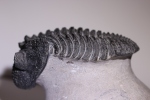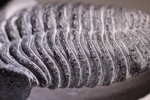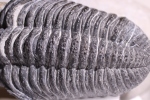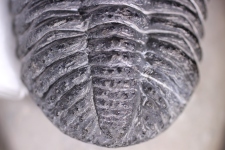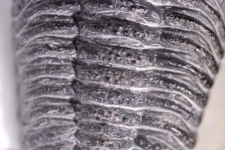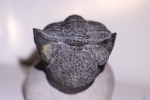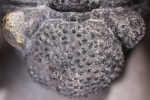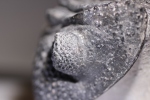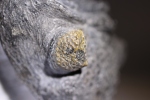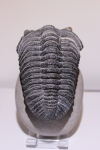Here is another Walliserops trifurcatus from my collection. Like the other specimens I have, this slightly enrolled Walliserops probably came from the Foum Zguid area of Morocco. It does not appear to have any major restorations done and both eyes have ocelli present(albeit worn).
NOTE: The WordPress gallery does not allow for full size images. In order to view the highest quality and resolution pictures, please click on “Permalink” at the bottom right while viewing the gallery.













